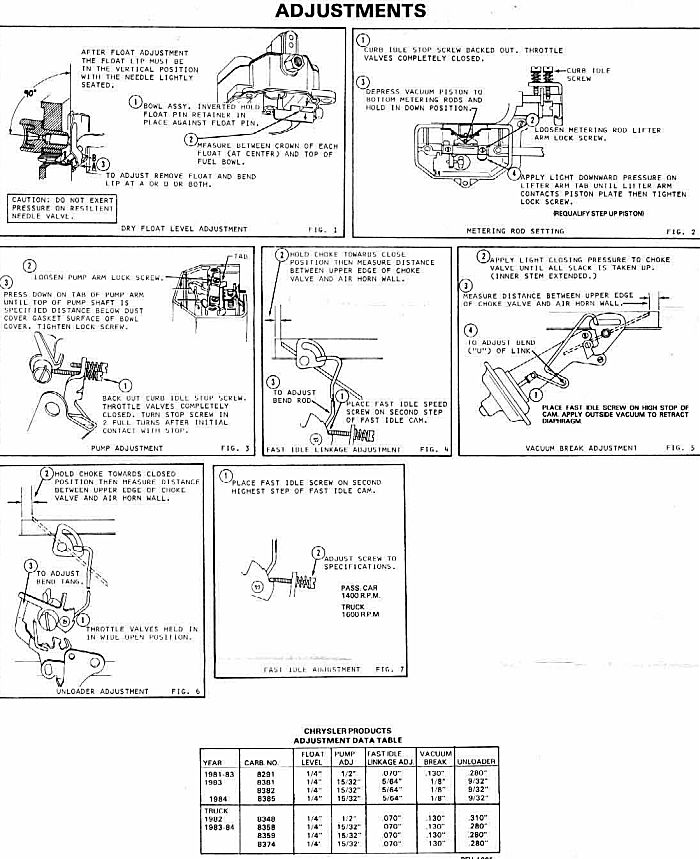The rebuilt replacement BBD I installed was running great - for about a week. It was running good at curb idle, at part throttle stop sign to stop sign, and at highway speed. It would sit and idle all day long if I wanted it to. All I needed to do to get it finely tweaked was to set the valve lash and a final idle mix adjustment. Until Friday...
After work, I cranked it up and let it warm a bit while I visited with a co-worker in the parking lot. I left the office, made several slow approaches to intersections, a couple of stops at some stop lights, cruised down the highway at 70 mph, took the off ramp, slowed down to make the turn onto a residential street - then it happened again, just like the old carb had been doing when all this started - it bogged and died.
I dropped into neutral and it cranked right up; back into drive and made it a few hundred feet and slowed to cross a RR track; it bogged and died as I rolled over the tracks. Cranked right back up; made it a few blocks farther to my street; made the turn and it die rounding the corner. It started again and I made it into my driveway and killed it.
It fires right up and runs as long as I keep a little pressure on the accelerator. As soon as I let the rpm drop, it bogs and dies. This is the very same symptoms as the old carb exhibited, so I suspected this one may have dropped a main idle tube like the other had done. I pulled the carb apart and found both tubes intact, so that is not the problem this time.
Now, I am completely stumped!
Here is one observation that may mean something or not...
When I pulled to top off the carb, there wasn't any leakage at the seal between the carb halves. I was expecting the bowl to be full of fuel and it would pour out. When the top came off, there was only a tiny bit of fuel in the bowl. The floats were sitting on the floor of the bowl. If the bowl is full when the engine is running and the fuel pump is doing as it should be, and the needle valve is functioning properly, and the float height is set correctly, then where did the fuel go after the car sat overnight?
|
